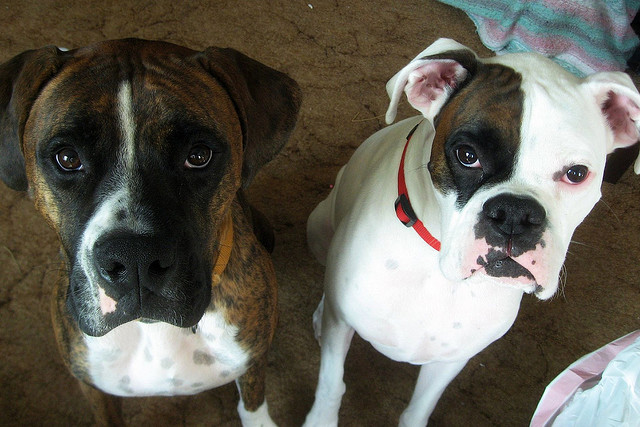
A key part of your training regimen is helping your dog understand what behavior is expected and appropriate.
Although many behaviors aren’t exactly desirable but simply tolerated, some behaviors, like inappropriate eliminating and chewing, should not be allowed and require a form of discipline.
To communicate to your dog that some behaviors are not appropriate, you should learn how to humanely correct your dog.
Positive Punishment vs. Negative Punishment
When I say the word “correct,” some may automatically think of something awful like hitting or slapping their dog.
Oddly enough, this type of discipline is called “positive punishment,” and, according to some studies, can tend to build aggression in a dog. But there’s no way I would ever condone hitting your dog.
If your dog, say, chews up your shoes or scatters garbage all over your kitchen floor, you can try “negative punishment.” It sounds bad, I know, but implementing negative punishment is an effective way to train your dog without resorting to physical violence.
Negative punishment is a form of correction that involves taking away something the dog enjoys. I don’t mean taking away one of the many balls on the floor that the dog doesn’t play with; to employ negative punishment effectively, you must take away something the dog highly values. Typically, the simple act of removing a valuable item from your dog, be it a favorite toy or a flavorful treat, is enough to get your point across while still retaining affection between you and your pet.
“No Reward Markers” Your Dog Will Remember
When using negative punishment, you must ensure that the dog knows that he is being punished for a particular behavior. Before you take something enjoyable away, start using a voiced “no reward marker” such as “eh-eh” or “nope.” I generally suggest people use something other than the overly used word “no.”
Watch this dog trainer use negative punishment to train his exuberant puppy:

When you catch your dog in the act of eliminating in the house, inappropriate chewing, or ignoring a known command, say your no reward marker immediately followed by taking away something that the dog enjoys.
For example, if you tell your dog to sit and he blatantly ignores you, say “eh-eh” and turn around for 15 seconds. The act of turning around not only takes away your attention but also takes away the opportunity for the dog to get a treat. This is especially effective for dogs with a high food drive.
If your dog is highly social, removing yourself from the training area completely and slamming the door behind you is very effective. If your dog is being particularly disobedient and doing something that is intolerable, you can put your dog in a time-out. To do this successfully, say your no reward marker and take your dog to a designated penalty area. Thirty seconds in time-out is usually enough to punish a bad behavior, though I would not suggest leaving your dog there any longer than one minute.
To use negative punishment on a dog that has a high play drive, you should take away the opportunity for your dog to play with his favorite toy.

Timing Is of the Essence in Negative Punishment
As I said before, when using any kind of punishment, especially negative punishment, you need to ensure that your dog understands exactly what behavior is being punished. Catching your dog’s inappropriate behavior in the act is key for this to work.
Make sure you also mark the negative behavior with your no reward marker, followed immediately by the correction. If you pair the correction with the no reward marker, you can eventually take away the correction and correct your dog effectively with a verbal signal.
Most positive reward dog trainers take advantage of negative punishment. If you are looking to help your dog understand what appropriate behavior is, I suggest you speak with a few trainers and learn how they advise you to correct your dog. You should ask them if they take advantage of negative punishment. If they advise that you physically punish your dog, then they are not entirely positive reward trainers.
Using negative punishment to correct your dog can keep you from unnecessarily hurting your pet.
Removing something valuable is often more effective and works very fast when done correctly. It also keeps your relationship with your dog safe and healthy.


